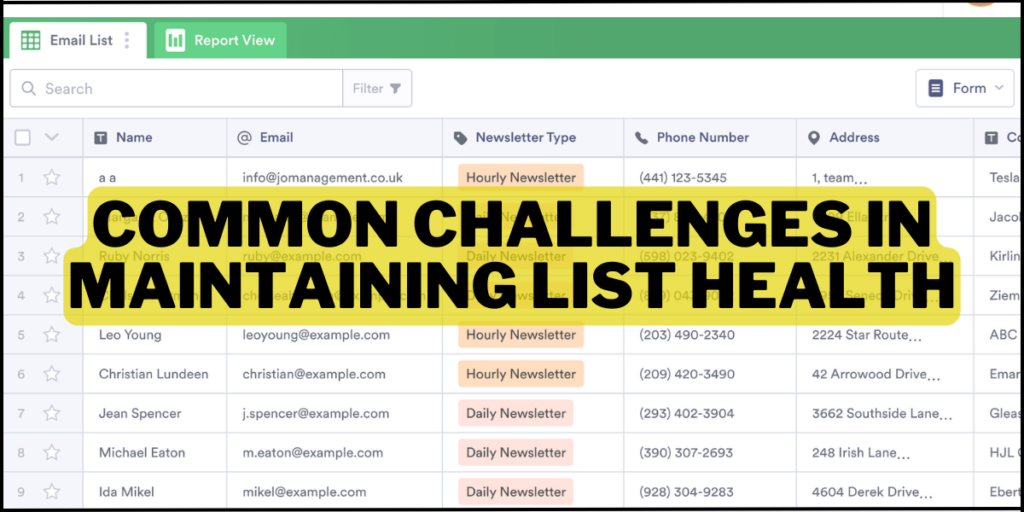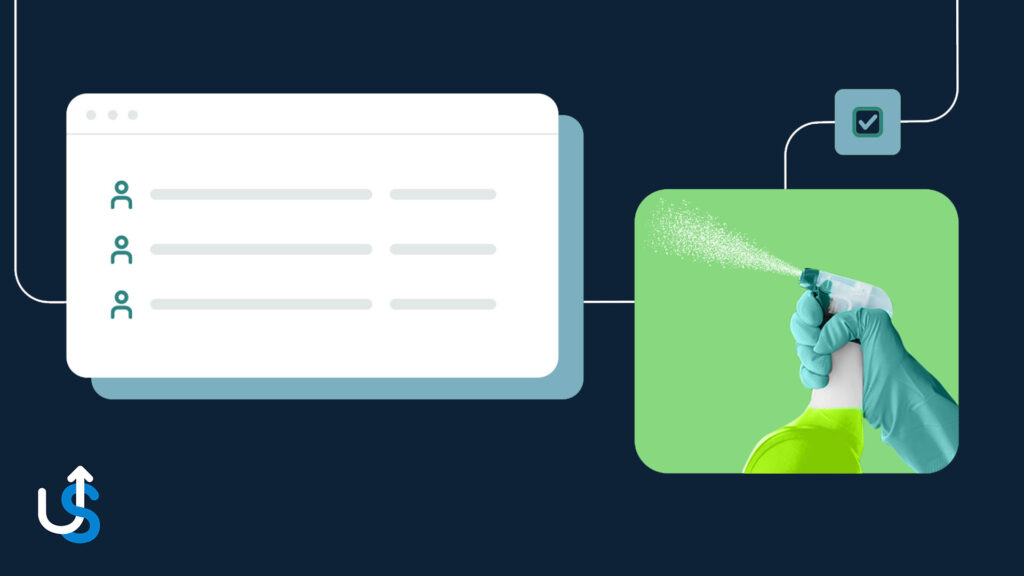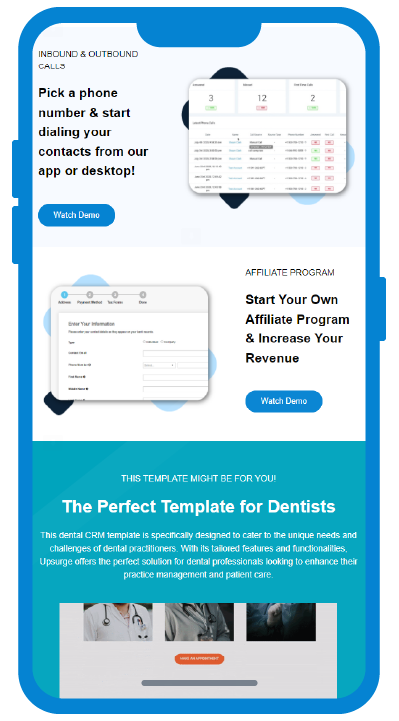
Having a healthy email subscriber list is crucial for the success of any email marketing campaign. An email automation subscriber list consists of individuals who have voluntarily approved to receive emails from a particular brand or organization. It is essential because it ensures that the emails being sent are reaching the right audience – people who are genuinely interested in the brand’s products or services. A healthy email subscriber list also helps to improve the overall deliverability rates, minimize bounce rates, and reduce the risk of emails existing marked as spam. This, in turn, leads to better engagement, higher open rates, and increased conversion rates.
Email marketing automation plays a vital role in maintaining list health. It helps to streamline & automate various processes, such as adding new subscribers, segmenting the list management best practices based on specific criteria, and sending targeted and personalized email campaigns. Automation ensures that the list is constantly updated and maintained, reducing the chances of sending irrelevant emails or spamming recipients.

Maintaining list health is a crucial aspect of email marketing tools, with several common challenges marketers often face. One of the biggest challenges is dealing with outdated and inactive email addresses. Over time, people change jobs, switch email providers, or stop using specific email addresses, resulting in an outdated list.
Secondly, spam complaints and unsubscribes can also affect list health. If recipients find the emails irrelevant or intrusive, they may mark them as spam or choose to unsubscribe. This not only increases the risk of being flagged as a spammer but also reduces the email engagement rate.
Lastly, email bounces, and problems with deliverability can negatively impact list health. Bounces transpire when an email cannot be delivered to a recipient’s inbox due to cases like a full mailbox or a feeble email address. These bounces can damage the sender’s reputation and decrease the chances of the emails reaching the intended recipients in the future. Achieving and maintaining list health requires regular monitoring, updating, and cleaning to ensure engagement, deliverability, and compliance with email marketing regulations.

Automation techniques for list cleaning are essential for maintaining a high-quality email list and ensuring that your marketing efforts are reaching engaged subscribers. One technique is to remove inactive subscribers regularly. This involves identifying and removing those who have yet to open or click on emails in a certain period. By doing this, you can eliminate non-responsive subscribers and focus your efforts on those more likely to engage with your content.
Another technique is to implement double opt-in, which requires users to confirm their subscription through a secondary step. This helps ensure subscribers are genuinely interested and engaged with your content, reducing the chances of receiving spam complaints or having uninterested subscribers on your list.
Additionally, automating re-engagement campaigns is crucial for dormant subscribers. By setting up automated campaigns that target inactive subscribers and offer incentives or exclusive content to re-engage them, you can bring them back into the active list and improve overall engagement rates.
Automating subscriber segmentation is crucial for effectively targeting the right audience and delivering personalized content. Segmenting subscribers based on their interests and behaviors allows companies to understand the preferences and needs of their audience, enabling them to create tailored marketing campaigns and relevant messaging. By categorizing subscribers into specific segments, businesses can send personalized offers, recommendations, and content that resonate with their audience, ultimately increasing engagement and conversion rates. Implementing automation tools enables companies to automatically assign subscribers to the most relevant segments based on their demographics, past interactions, and browsing history.

This eliminates the need for manual segmentation, saving time and ensuring accuracy. With automation, businesses can continuously update and refine their segments as subscriber’s preferences and behaviors evolve. By automating subscriber segmentation, companies can optimize their marketing efforts, improve customer satisfaction, and drive business growth.

Personalized emails have become an effective tool for engaging subscribers in today’s digital age. By tailoring the content and messaging to match individual preferences and interests, businesses can create a more personalized & engaging experience for their subscribers. This, in turn, can lead to increased click-through rates, increased conversions, and improved customer loyalty. One of the key ways to achieve personalized emails at scale is through automation. By leveraging automation tools and platforms, businesses can collect and analyze subscriber data, such as browsing history, purchase behavior & demographic information, to create segments and target specific groups with relevant content.
Automation can also help deliver personalized emails at the right time, ensuring they are received when subscribers are most likely to engage. Additionally, businesses can use automation to set up triggers and workflows that dynamically populate emails with personalized content and recommendations based on each subscriber’s unique preferences and behavior. As a result, automation enables businesses to efficiently and effectively deliver customized emails to their subscribers, which can lead to better engagement and, ultimately, drive business growth.
Giving subscribers an easy way to unsubscribe is paramount in any email marketing campaign. It is essential to respect the privacy and preferences of subscribers who may no longer wish to receive emails from a particular brand or company. Providing a simple and hassle-free opt-out process demonstrates a commitment to customer service and can prevent any negative experiences or potential damage to a brand’s reputation.
Automation can streamline the opt-out process, making it easier for subscribers and marketers. By implementing automated systems, subscribers can easily and instantly opt out without any manual intervention required from the marketer. This not only saves time and resources but also ensures that the opt-out request is processed promptly, preventing any further communication that the subscriber may find intrusive. Automation allows for a more efficient and seamless opt-out experience for subscribers while enabling marketers to maintain compliance with relevant data protection regulations.
Monitoring list health metrics is crucial for any organization to ensure the effectiveness of its email marketing campaigns. Several essential email metrics should be tracked to assess the health of a mailing list. These metrics include email deliverability rate, bounce rate, spam complaint rate, unsubscribe rate, and open rate. By monitoring these metrics, organizations can gain valuable insights into the quality and engagement of their email lists.
Automation platforms are vital in providing these insights for monitoring list health. These platforms automate tracking and analyzing the performance metrics mentioned above. They provide real-time dashboards and reports that highlight any issues or trends that may be affecting list health. For example, if the bounce rate is high, it indicates the need for list cleaning or re-engagement campaigns. If the spam complaint rate is increasing, it may suggest that the organization’s email content needs improvement. With the help of automation platforms, organizations can proactively identify and address any list health issues, leading to improved email deliverability and engagement rates.

In conclusion, maintaining a healthy email subscriber list is necessary for the success of any email marketing campaign. A healthy list ensures that your messages reach the right audience & have a higher chance of engagement. It is essential to regularly evaluate the quality of your list by removing invalid or dormant email addresses and incorporating strategies to attract new subscribers.
Automation plays a vital role in maintaining list health as it allows for efficient management and organization of subscriber data. By implementing automation tools, marketers can streamline list segmentation, email personalization, and removing unsubscribed or bounced email addresses. This not only saves time and effort but also helps in delivering targeted and relevant content to subscribers. Therefore, emphasizing the benefits of automation in maintaining list health is crucial in ensuring the overall success & effectiveness of an email marketing campaign.

The Real Benefits of Contact Management with CRM for Collecting Customer Data Managing and leveraging customer information has become a foundational aspect of success…
Can a CRM Really Automate My Sales Follow-Ups and Boost My Small Business Revenue? Small businesses face increasing pressure to maintain consistent communication with…
Best CRM Software for Sales Prospecting: Transform Your Sales Prospecting Struggling to turn cold leads into paying customers? You’re not alone. In today’s competitive…